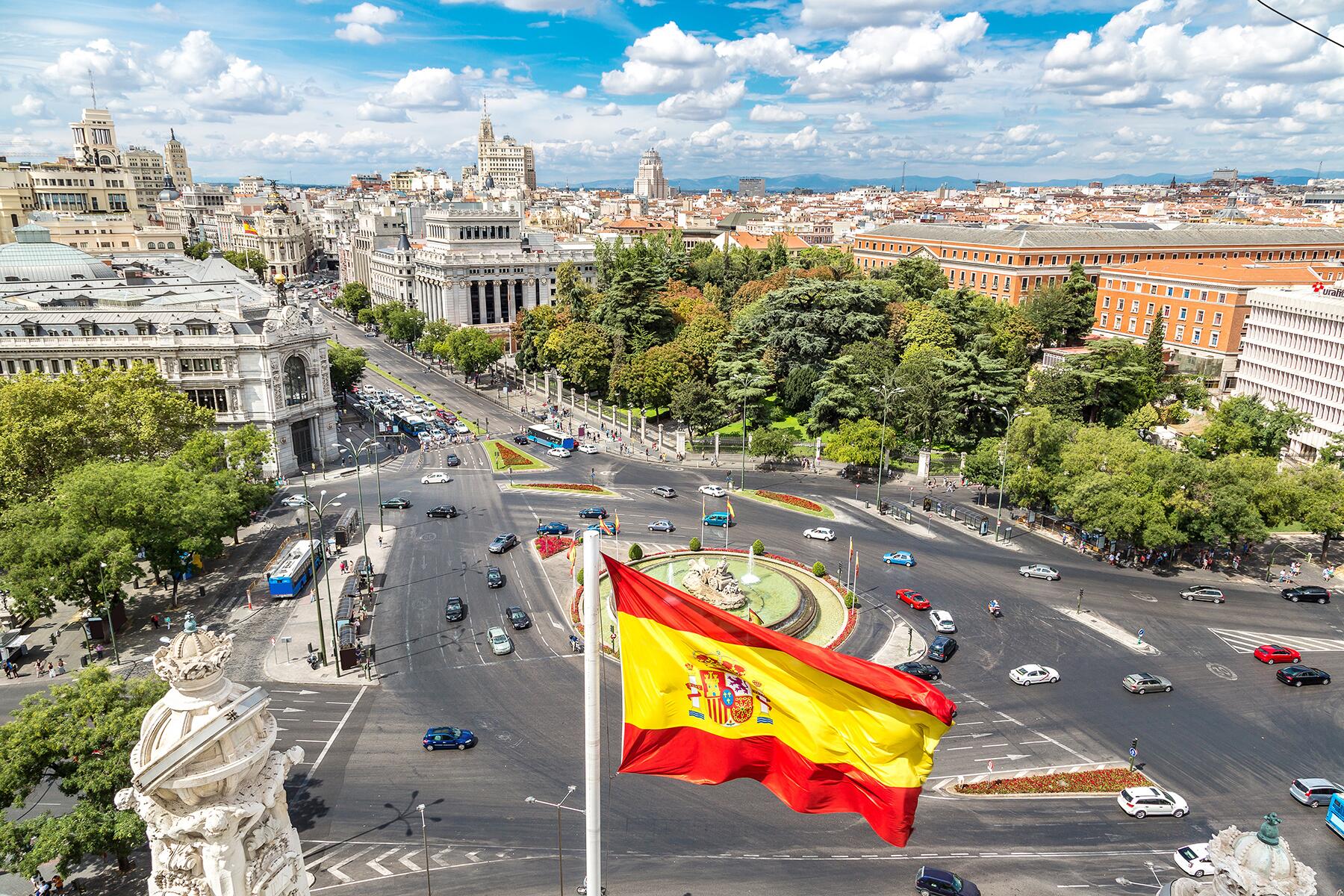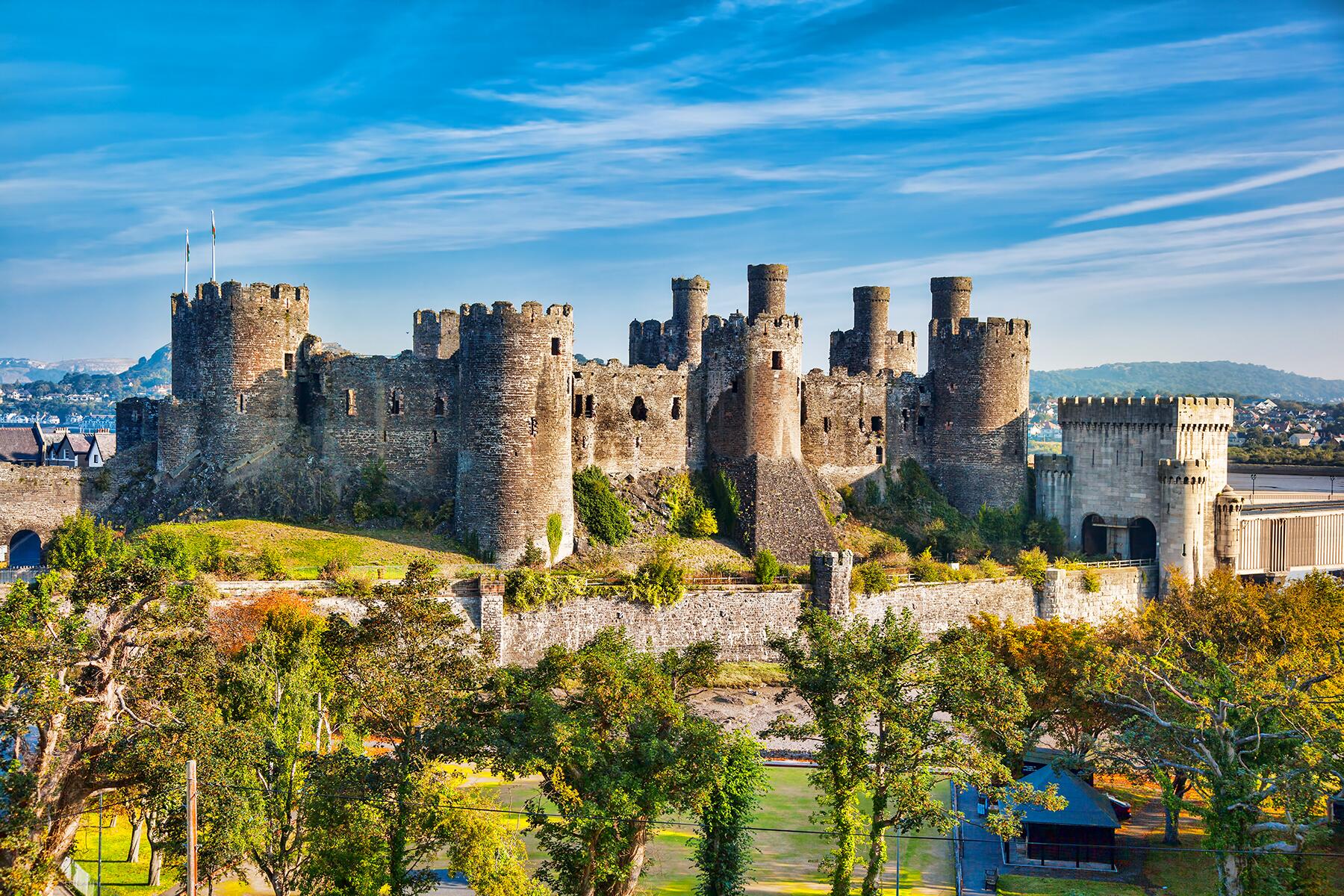These relics of a bygone age are just as awe-inspiring today as they were centuries ago.
While the age of kings, queens, and knights in shining armor is now largely confined to the realms of fantasy novels and elaborate TV shows, the soaring castles of that distant past are still very much with us. And while the medieval fortresses dotted around the landscape of the U.K. are no longer used for beating off hordes of invading marauders from land and sea, they do function as an epic window into a time when the land really was a Kingdom. Here are 15 of the best examples still with us.
Top Picks for You
Windsor Castle
WHERE: Berkshire, England
England’s most famous castle and the lavish residence of the British royal family, Windsor Castle’s history stretches back almost 1,000 years. There’s been a castle in the current location just outside of London since the days of William the Conqueror and it’s now the longest-occupied palace in Europe. While sections have been rebuilt and restored, it’s survived many tumultuous events including the English Civil War, the Second World War, and an almost-devastating fire in 1992.
Visitors today should also check out the Long Walk—a grand avenue of trees that has some spectacular views (including London’s skyline) over the landscape from its summit in Windsor Great Park.
Warwick Castle
WHERE: Warwickshire, England
With its rising turrets and towers visible from the train as you weave through the Midlands countryside towards the charming town of Warwick, you can just imagine how imposing this fortress must have looked during its medieval heyday. Dating back to 1068 and used as a stronghold until the 17th century, Warwick Castle is situated next to the River Avon and largely constructed of stone.
As well as the waterside location, it also features classic castle architecture such as arrow slits, two drawbridges, a gate, and portcullises. This is absolutely a place where your medieval imagination can run wild.
Recommended Fodor’s Video
Highclere Castle
WHERE: Hampshire, England
You’ve probably seen Highclere Castle before. When I mentioned elaborate TV shows in the introduction, I had the likes of Game of Thrones in mind but this castle houses a much more sedate affair, albeit with drama of a different kind. Built in 1679 and located around 60 miles west of London in the county of Berkshire, this ornate country house became famous worldwide as the setting for Downton Abbey.
Yet the castle should probably be more well known as the location for the drafting of the British North America Act of 1867 which lead to the foundation of the present-day nation of Canada.
Middleham Castle
WHERE: Yorkshire, England
The childhood home of King Richard III and now a ruined but still extensive fortress, Middleham Castle dates back to 1190 and fell into ruin in the 17th century. Located in rural North Yorkshire, the walls are all intact and despite being roofless, it’s still a fascinating castle to explore.
Although Richard didn’t spend much of his brief two-year reign at Middleham, his name is still associated with it and, thanks to his notoriety as the last English king to die in battle and the later Shakespeare play (Richard III), his name will always attract plenty of visitors to this historic site.
St Michael’s Mount
WHERE: Cornwall, England
This spectacular offshore tidal island castle in Cornwall is unique in that it has a nearly identical counterpart—the similarly titled Mont-Saint-Michel in France. Extending out from the picturesque Cornish coastal town of Marazion and accessible by foot (when the tide is out) or by boat, St Michael’s Mount is perched on a rocky hill and is visible from miles around. The site of a monastery from the eighth to the 11th century, the oldest buildings currently occupying the site date back to the 12th century.
Bodiam Castle
WHERE: Sussex, England
It could be argued that when you think of a classic castle, Bodiam Castle could be the one you’re thinking of, even if you didn’t know its name. With its large moat, quadrangle shape, portcullis, and towers, it looks like something straight from a movie set. Built in 1385 and located in East Sussex in the south of England, it was designed to be used to defend against French invasions during the Hundred Years War.
It later fell into ruin but has slowly been restored and renovated since the 19th century and is now a picturesque tourist attraction.
Tower of London
WHERE: London, England
Despite its elegant design, prominent location on the River Thames, and proud housing of the Crown Jewels, the Tower of London is largely known as a place of torture and death (even though only seven people were executed there before World War I). Dating back to the 11th century and originally used as a palace for various kings and queens, it became notorious as a prison and is the subject of the famous phrase “sent to the tower.”
Well-known prisoners of the Tower of London include the likes of Sir Walter Raleigh, Guy Fawkes, and Nazi war criminal Rudolf Hess.
Lindisfarne Castle
WHERE: Northumberland, England
One of the U.K.’s most picturesque and—unsurprisingly—most photographed castles, Lindisfarne Castle has also been used over the years as a filming location for movies. Set out from the coast on the tidal island of Holy Island in the far north of England, there’s been a monastery here since the seventh century but the main fortifications weren’t built until the 16th century.
The castle almost fell into ruin over the following centuries but was saved and restored by the efforts of new owner Edward Hudson and architect Edwin Luytens in the early 20th century.
Bamburgh Castle
WHERE: Northumberland, England
The Northumberland coast near the Scottish border is blessed with several stunning castles and Bamburgh is comfortably one of them. Located only a few miles south of Lindisfarne Castle, the site has had activity on it dating back to the Celtic Britons of the 5th century.
The core of the magnificent coastal castle that currently stands on the site was constructed by the Normans and during the Wars of the Roses became the first castle in England to be defeated by cannon fire (artillery).
Caernarfon Castle
WHERE: Gwynedd, Wales
Dominating the scenery of the town of Caernarfon in northwest Wales, the majestic Caernarfon Castle was completed in 1330 (after 47 years!) and cost between £20,000 and £25,000 to construct—an enormous sum of money for the era. Following the cooling of tensions between the Welsh and the English by the time of the Tudors, the castle slowly fell into neglect as it became less important.
These days its grand towers and imposing walls form an essential part of any visit to this windswept corner of Wales.
Conwy Castle
WHERE: Conwy, Wales
Hugging a rocky ridge on the River Conwy near the windswept north Welsh coast, Conwy Castle is best approached from the Conwy Suspension Bridge (an impressive sight in its own right). Built between 1283 and 1287 (a considerably rapid construction job for the era), it’s seen its fair share of wars over the years and is probably happy in its role as a tourist attraction for now.
Climb the towers and appreciate the stunning surrounding landscape with the wild coast to the north and the majestic Snowdonia mountains to the south.
Edinburgh Castle
WHERE: Edinburgh, Scotland
Perched upon the volcanic crag of Castle Rock and dominating the Edinburgh city skyline, Edinburgh Castle is an icon of Scotland and possibly in the most epic location of this entire list. Once the residence of the Scottish monarchs, it’s now one of Scotland’s most popular tourist attractions, especially with its position at the top of the famous Royal Mile.
The oldest section (St. Margarets Chapel) dates back to the 12th century and the entire area has been a UNESCO World Heritage Site since 1985.
Dunrobin Castle
WHERE: Highland, Scotland
Speaking of stunning landscapes, Scotland has no shortage of them, and Dunrobin Castle in the northern Highlands one of the country’s most picturesque. Though there’s been a fortress in this location since the 13th century, the castle was completely remodeled in the mid 19th century and now resembles a French chateau.
The French influence was taken further in 1850 with the creation of the castles’ expertly landscaped French gardens that take more than a few nods of inspiration from the Gardens of Versailles.
Kilchurn Castle
WHERE: Argyll and Bute, Scotland
If photography’s your thing then you could do a lot worse than making your way to Kilchurn Castle at the northeastern end of Loch Awe in Scotland. Though the castle is largely a ruin now, its majestic location on the banks of the loch with the mountains rising behind it means that the whole scene is beautifully reflected on the water.
Getting up close to the castle is great but make sure you head up the A819 road then make the short walk to the Panorama Viewpoint for the best shots.
Eilean Donan Castle
WHERE: Highland, Scotland
Though Kilchurn is similarly majestic and also enjoys the benefit of a water reflection in a picturesque location, Eilean Donan Castle is the one that gets all the attention. Appearing in everything from movie settings (Bond thriller The World is Not Enough) to whiskey packaging, Eilean Donan is rightfully a Scottish icon.
Though constructed in the 13th century, it was brutally attacked by cannon fire in 1719 and lay in ruins for two centuries. Rebuilt between 1912 and 1932 by Lieutenant Colonel John MacRae-Gilstrap, it now looks just as elegant as before. Catch it at sunset for the best photo opportunities.





I enjoyed your articule! Duart Castle (13th century), Clan Maclean’s seat on the Isle of Mull, Scotland, is worth visiting too. Full of stories and three films shot there. Sean Connery was a Maclean on his mother’s side and you may remember “Entrapment” (1999).
https://duartcastle.com/" target="_blank" rel="noopener">https://duartcastle.com/
Article